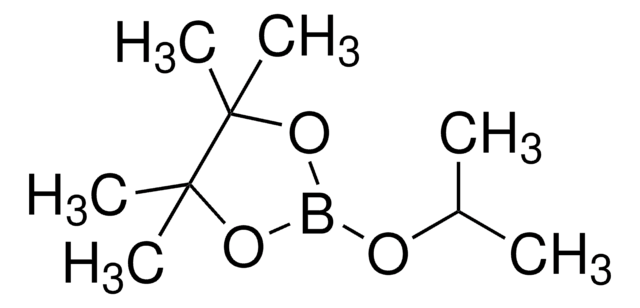186171
n-Butyllithium solution
1.6 M in hexanes
Synonym(s):
n-BuLi, Butyl lithium, Butyllithium solution, Lithium-1-butanide
About This Item
Recommended Products
form
liquid
Quality Level
concentration
1.6 M in hexanes
density
0.68 g/mL at 25 °C
storage temp.
2-8°C
SMILES string
[Li]CCCC
InChI
1S/C4H9.Li/c1-3-4-2;/h1,3-4H2,2H3;
InChI key
MZRVEZGGRBJDDB-UHFFFAOYSA-N
Looking for similar products? Visit Product Comparison Guide
Application
- Copolymerization of butadiene and styrene under the influence of n-butyllithium: This study explores the copolymerization process using n-butyllithium as a catalyst, which is significant for the development of new synthetic rubber materials (V Bronskaya et al., 2023).
- Modifiers of n-Butyllithium in the Synthesis of Polybutadiene and Styrene-Butadiene Rubbers: Explores the use of n-butyllithium with different modifiers in the synthesis of industrial rubbers, important for understanding the control of polymer properties (VS Glukhovskoi et al., 2014).
- Aggregation and Solvation of n-Butyllithium: Examines the aggregation behavior and solvation properties of n-butyllithium in various solvents, providing insights into its chemical interactions essential for organic synthesis (O Tai et al., 2017).
Packaging
The 25 mL Sure/Seal™ bottle is recommended as a single-use bottle. Repeated punctures will likely result in decreased performance of product.
Other Notes
Legal Information
related product
Signal Word
Danger
Hazard Statements
Hazard Classifications
Aquatic Chronic 2 - Asp. Tox. 1 - Eye Dam. 1 - Flam. Liq. 2 - Pyr. Liq. 1 - Repr. 2 - Skin Corr. 1B - STOT SE 3 - Water-react 1
Target Organs
Central nervous system
Supplementary Hazards
Storage Class Code
4.2 - Pyrophoric and self-heating hazardous materials
WGK
WGK 3
Flash Point(F)
-14.8 °F - closed cup
Flash Point(C)
-26 °C - closed cup
Choose from one of the most recent versions:
Already Own This Product?
Find documentation for the products that you have recently purchased in the Document Library.
Customers Also Viewed
Global Trade Item Number
| SKU | GTIN |
|---|---|
| 186171-18L | |
| 186171-1L | |
| 186171-4X25ML | 4061838757951 |
| 186171-800ML | 4061837880018 |
| 186171-8L | |
| 186171-100ML | 4061837879951 |
| 186171-18L-C | 4061837879975 |
| 186171-18L-KL | 4061837879982 |
| 186171-20L | |
| 186171-4X100ML | 4061838757944 |
| 186171-50ML | 4061837880001 |
| 186171-8L-KL | 4061837880032 |
Our team of scientists has experience in all areas of research including Life Science, Material Science, Chemical Synthesis, Chromatography, Analytical and many others.
Contact Technical Service











